The champion of English Song who was Elgar’s muse
By Alison Bailey
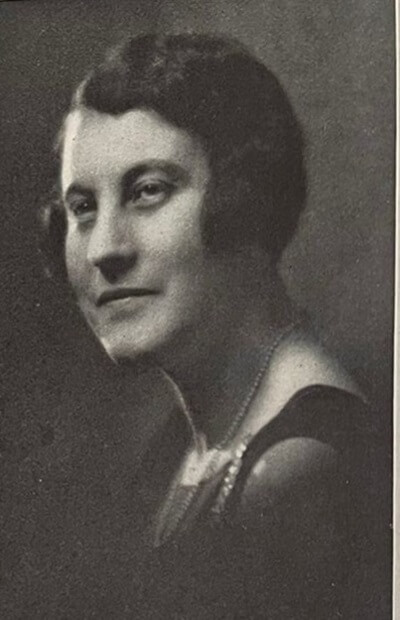
World class soprano, Joan Elwes was 35 when she married Lindsay Millais Jopling in 1931 and moved to live in Chesham Bois. A specialist in early Baroque music, she was also known as a champion of English song and was one of Edward Elgar’s favourite performers.
He dedicated two of his last songs to her: “It is isnae me”, appropriately about unrequited love and the unfinished “Ecstasy” or “XTC” as Elgar originally wrote which looks very modern today! A familiar voice on radio and at musical festivals Joan also collaborated with Ralph Vaughan Williams who was the godfather of the Joplings’ first daughter, Jane.
A small wedding
Joan’s father Edward Elwes, the Chancellor at Chichester Cathedral had died the previous year and her mother Emily was too ill to return from the South of France to attend the wedding at St Ethelburga’s Church Bishopsgate. The wedding party included many eminent figures. Joan was given away by her uncle, Sir Henry Maxwell Lyte KCB, who was married to her mother’s older sister, Frances. Maxwell Lyte, a historian and writer, who had been the Deputy Keeper of the Public Records was also one of the witnesses. The other witness was Joan’s mother-in-law, the celebrity portrait artist and suffrage campaigner, Louise Jopling Rowe. The best man was Sir Henry Morris KC, who had been the Liberal MP for Bristol East and the organist was Sir Hugh Allen, Director of the Royal College of Music. Joan carried a bouquet of white lilies and wore a white satin gown and an unconventional red velvet cape which one reporter described as a “startling short cape coat of vivid scarlet”.
Lindsay Millais Jopling
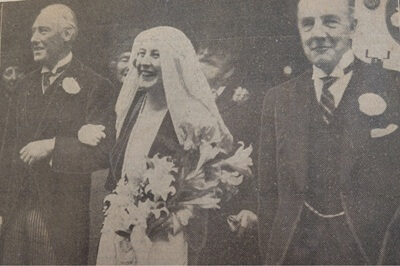
The groom was a barrister and twenty years older than his bride. His parents’ artistic circle included Whistler, Oscar Wilde and Ellen Terry and Lindsay was named for his two godfathers Sir Coutts Lindsay, the founder of the Grosvenor Gallery and the Pre-Raphaelite artist Sir John Everett Millais. Lindsay’s father, watercolourist Joseph Jopling died when he was nine.
Lindsay entered the Indian Civil Service, a prestigious career path at the time and became the Deputy Commissioner of Lucknow Province in 1916. That same year he married Nina Strachey the daughter of the late Sir John Strachey. The couple had no children and divorced in 1927.
Manor Barn
Lindsay left India and returned to practice law in London. His mother had married lawyer George Rowe in 1887 and had moved out to Chesham Bois during WWI. In 1922 Lindsay bought the property Manor House on North Road that were renting so that it could become their permanent home. Before Lindsay returned from India his mother started to convert the large barn to the east of the farmhouse as a spacious weekend home for him. It had previously been used as a storage for old iron! A 1933 article in Homes and Gardens said that: “It occurred to her [Louise] that it could be adapted as a home for her son, and a more convenient and practical conversion can hardly be imagined. Not the least of its charms is the picturesque studio-sitting-room, made out the end of the barn”.
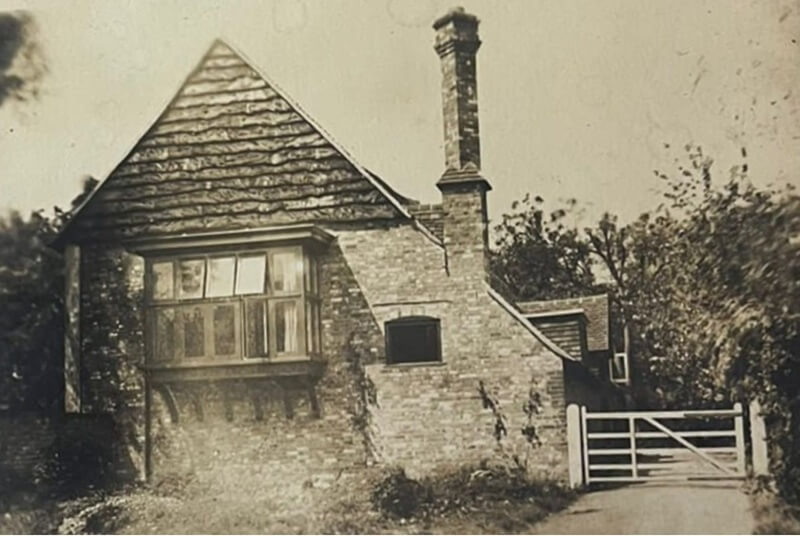
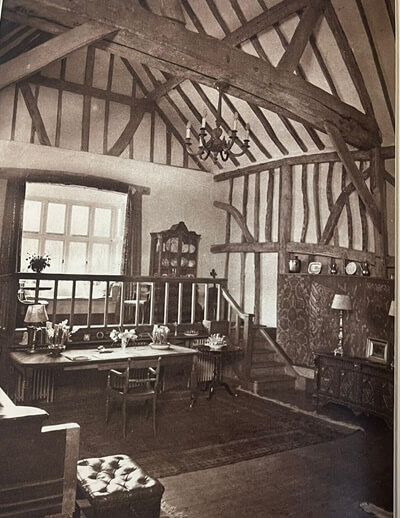
Fashionable London architects Forbes and Tate gave the barn, believed to date from the 1600s, an Arts and Crafts feel with exposed beams, a turned brick chimney and a large bay window at the front with a window seat overlooking the common. This raised area was reached by a wooden staircase and became the perfect stage for musical performances and recitals. Indeed, in 1929 Lindsay lent the studio for a performance by a pianist and violoncellist which was reviewed in the local paper.
Joan gave a public performance here in May 1941 as a fundraiser for the Amersham War Weapons Week which was again reported in the local paper: “A large audience had a musical treat on Friday evening when Madame Elwes gave her recital in the beautiful oak-raftered music room at Barn Manor, Chesham Bois. In this delightful setting, the audience sat enraptured by the sweet voice and facile style of the artist, whose voice was heard to added advantage in so “intimate” an atmosphere. Her opening item, Handel’s “Art thou Troubled” was indeed beautifully rendered, her enunciation being perfect, and the softest passages given with such a delicacy of tone that a storm of applause greeted its finish”.
Joan Izott Elwes
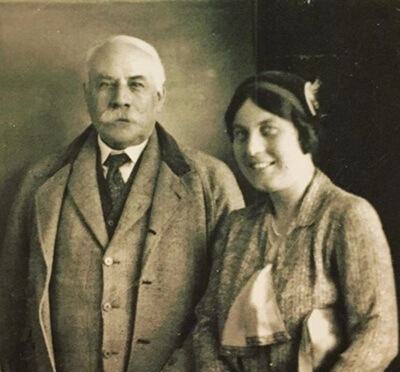
Joan was born in 1895 in Woolbeding, West Sussex. She was the fourth of five daughters born to Reverand Edward Leighton Elwes and Emily Fownes Somerville. Joan was born when her mother was 43 and her older sisters were already grown up. Mary, the eldest was a painter, Avis married a vicar and Dorothy also remained unmarried. Constance, Joan’s younger sister, ran a riding school and bred dogs with her husband John Glover.
Joan’s maternal grandfather was the barrister James Curtis Somerville, the Deputy Lieutenant of Somerset. On her father’s side she was related to the renowned tenor Gervase Elwes.
Joan attended the Godophin School in Salisbury and took on voluntary work organised by lady Brassey when WWI broke out. She studied cello at London’s Royal College of Music, living independently in a boarding house in Kensington. She took singing lessons with the Polish dramatic tenor and opera star Jean de Reszke.
Joan launched her singing career relatively late at the age of 27 but was soon making a name for herself in recitals and dramatic oratorios. In 1925 she toured as “the Famous Soprano” with the Catalan popular violoncellist Pau (Pablo) Casals, “the Greatest ‘Cellist in the World”. That same year, with great confidence she wrote to Edward Elgar asking if he would give her some coaching lessons as she was studying three of his songs for a performance.
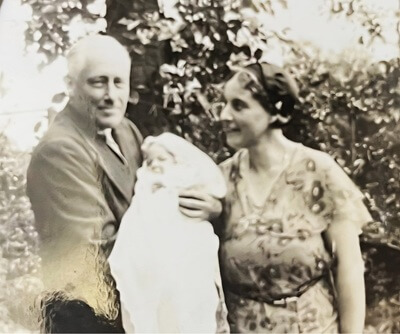
Elgar scholar Martin Bird wrote of the enduring friendship that developed between Elgar and Joan based on letters kept by Joan’s daughter Louise. Whilst exploring their friendship with the knowledge that “Elgar had an eye for an attractive young woman, particularly if she was a musician and especially if she was very intelligent”, Bird concluded that Joan was amused by Elgar’s infatuation, and that whilst very fond of him, she successfully kept him at arm’s length. She developed a firm friendship with his daughter Carice, who lived near Joan’s family home, Glebe House, near Bramshott, Hampshire, with her husband Sam Blake.
Joan became a frequent visitor at Elgar’s home near Stratford until his death in 1934. He supported her career, promoting her as one of his favourite soloists. In a letter from July 1928, he wrote: “your singing in The Spirit of England, The Kingdom, The Dream of Gerontius and Caractacus gave me great pleasure and satisfaction & I shall be glad to hear that you are entrusted with the solos in any of my works”.
In March 1929 Joan was engaged for her most important appearance to date, the Royal Choral Society’s performance of The Kingdom in the Albert Hall with Elgar conducting the New Symphony Orchestra. Regular festival work followed such as appearances at the Three Choirs Festival in Worcester and Hereford.
Joan and Lindsay met at a dinner given by a mutual friend, the distinguished artist Beatrice Bland. Joan maintained her friendship with Elgar and Carice after her marriage and Carice stayed at Manor Barn in October 1931. Unusually for the time, Joan also continued working after her marriage. In 1935 she gave a series of six recitals at Cowdray Hall, Cavendish Square devoted to Bach. Although after the arrival of three children, her appearances were usually closer to home.
During the war Joan gave many performances to raise funds for the war effort or the Red Cross and became a regular feature at the monthly Hour of Music Concerts at Amersham Free Church often accompanied by concert pianist Francesco Ticciati, who also lived in Amersham.
In 1947 Joan sang five Elgar songs at Nell Gwynne House in Chelsea at a benefit concert for the Elgar Memorial Fund to support the Elgar Birthplace Museum in Worcestershire. She devoted much of her later years to teaching, particularly children, and was a passionate and inspiring vocal coach. She continued to take part in music festivals locally, both as a performer and an adjudicator. Joan died at Manor Barn in 1961, six years before Lindsay, and they are buried together in the Chesham Bois Burial Ground.
Unless otherwise stated all photos are courtesy of Glasgow University’s Louise Jopling archive.
Sources
Glasgow University Louise Jopling Archive
Louise Grattan
Ancestry.com
British Newspaper Journal
An Enduring Friendship: Elgar and Joan Elwes, Martin Bird, The Elgar Society Journal, Dec 2016, Vol 19 No 6
‘It Isnae Her’: Elgar, Women and Song, John Norris, The Elgar Society Journal, Nov 2010, Vol 16 No 6

